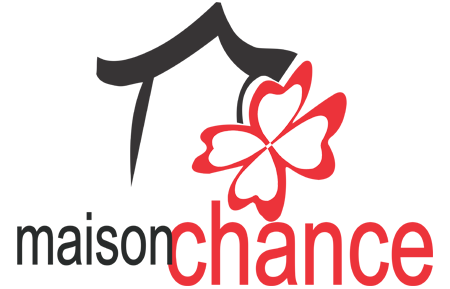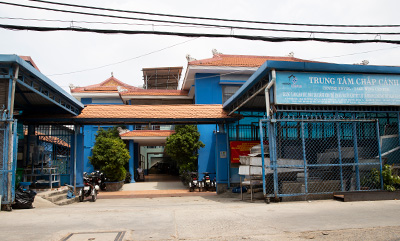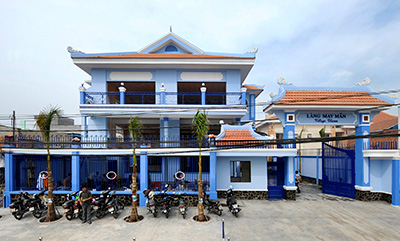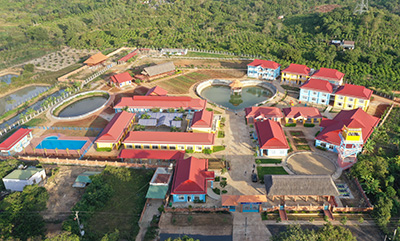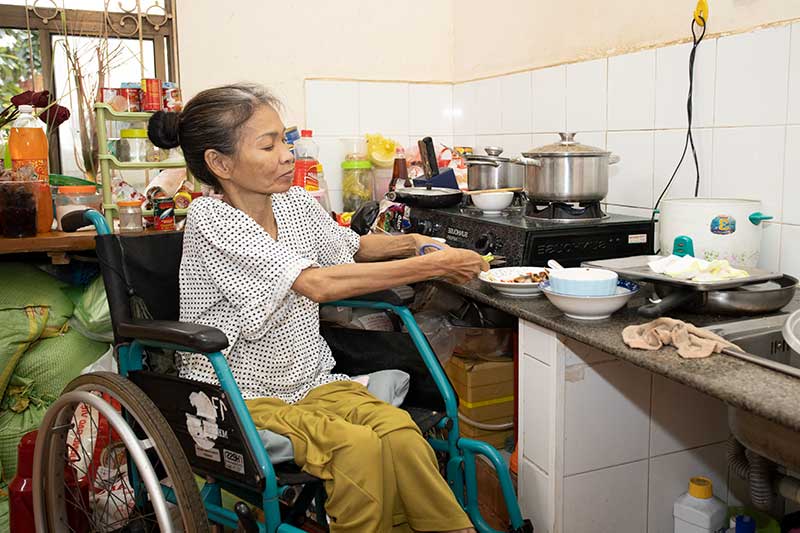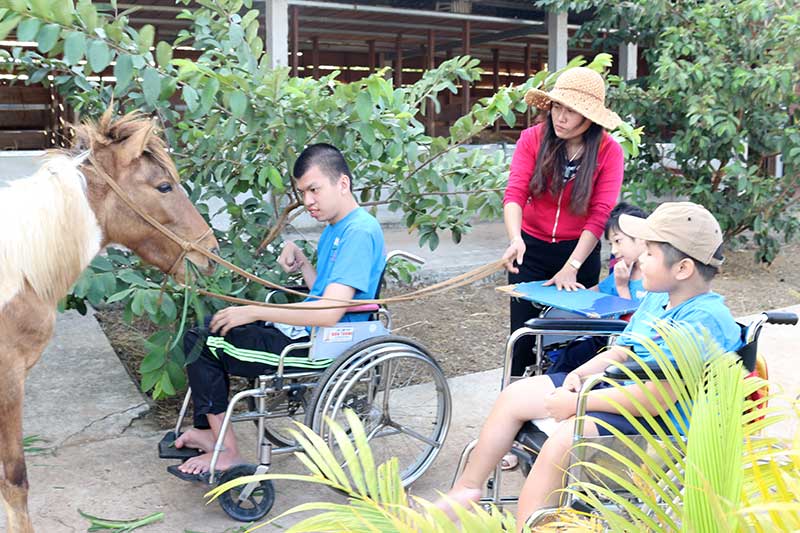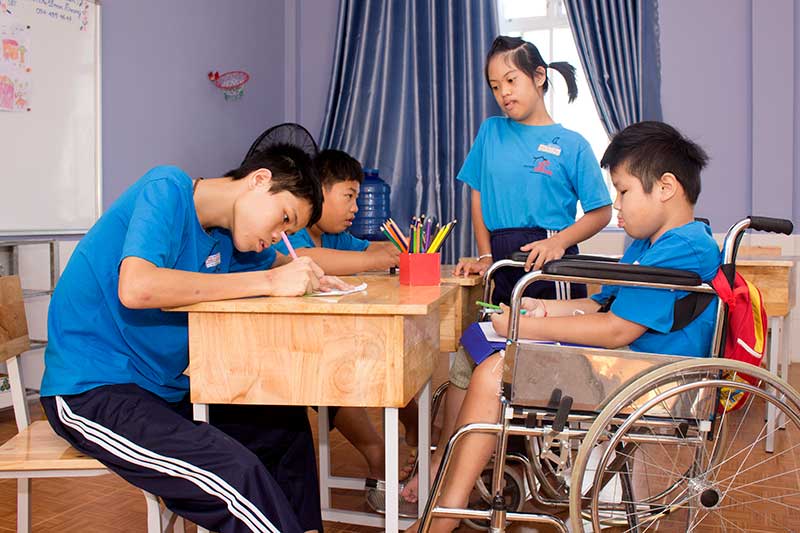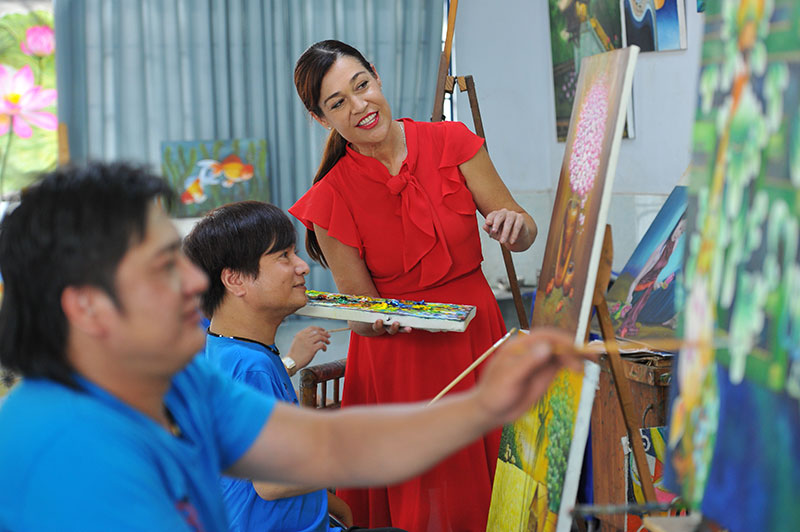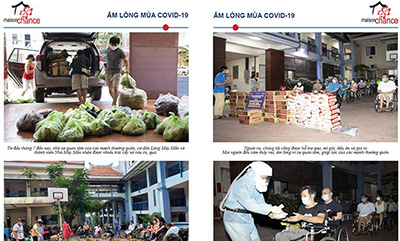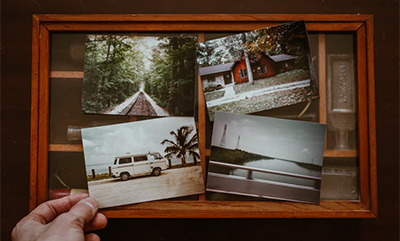OUR FOURTH INVESTIGATION TRIP (since November 2011) TO THE REGION WHERE A NEW MAISON CHANCE WILL BE BUILT IN A RURAL AREA.
From the 4th to the 8th of February 2012, the project office of Maison Chance organized another investigation trip to the provinces of Binh Duong, Phuoc Long, Dak Nong and Dak Lak, in order to learn more about the population’s special needs in these regions. We also wanted to visit the social organizations to observe their operational modesknow how disadvantaged people live in the area.
The participants to this trip were: Tim – founder of Maison Chance, McFreddy – Photographer, Cuong – assistant and Mrs Clara Ribeiro – President of the International Maison Chance Federation.
We left Saigon at 1pm on February 4. Our plan was to stop in Phuoc Long as we were unsure about the driving conditions in the area, but we eventually managed to make our way straight to Gia Nghia city, Dak Nong. We had a little bit of a hard time though for some sections of the roads were in poor condition, but it gave us the opportunity to enjoy some beautiful mountain and lake sceneries we didn’t think to be lucky enough to admire before our departure.
We arrived in Gia Nghia at 8pm. The city is 500m above the sea level with a pretty cool climate, but very enjoyable at this time of the year. Gia Nghia city center has been created 6 years ago and soon became the main center in the Dak Nong province, which was created in 2004 after it was separated from the Dak Lak province.
We checked in in a hotel near the city center and found a restaurant to have dinner just before Tim and Clara started a conferencecall with the Federation. At the end of the first day, we all were pretty tired because of a long journey.
On the following day, the air was nice and warm. We stopped by a coffee shop along the road to enjoy the high-plateaux coffee, which is notoriously delicious.
Most people there are farmers who grow coffee and rubber trees, sweet potatoes, cashew and pepper trees. They also breed cattle and goats.
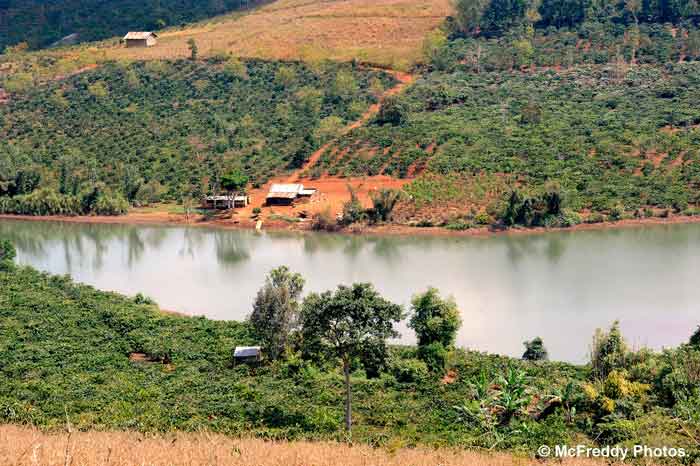
We further drove to Buon Ma Thuot. It was there much easier to drive because of the good roads and we could stop at the Dak Nong social center; unfortunately we only found an office there and no center that actually welcomes disadvantaged people. Orphans, disabled people, elderly persons and psychiatric patients in here are usually sent to Buon Ma Thuot, which was our next stop. The Dak Nong province is 6.514,5 km2 with a population of 489.442 inhabitans, a major city and 6 districts. However, there is no social base yet that could match the residents’ needs.
We then passed by Dak Mil which is 60km away from Gia Nghia at an altitude of 500m. The north region is 400-600 m above the sea level whereas the south is 700-900 m.
Dak Mil is equipped with basic facilities such as electricity, roads systema and health centers. The living conditions are there well developed and we thus didn’t stop. We drove again and soon could see Buon Ma Thuot city from a distance.
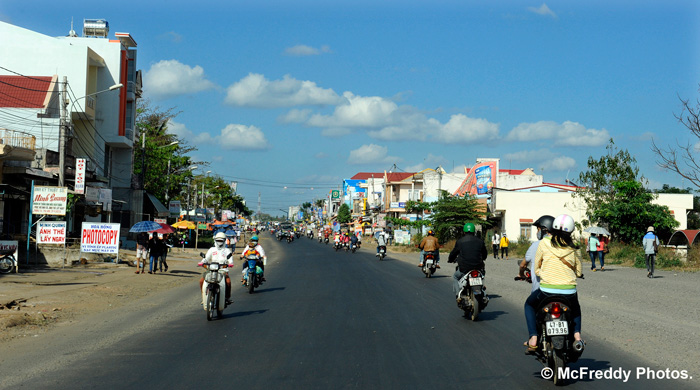
Buon Ma Thuot was founded 100 years ago. Covering a surface of 377,18 km2 with a population of 340.000 inhabitants at an altitude of 500m, the city is the home of 31 different nationalities. The Kinh are the main ethnic group with 85,04% of the population and 14,96% of the population are from an ethnic minority ( 10,91% are from the Ede group).
We first wanted to visit the social center of the Dak Lak province which is located in Buon Ma Thuot city. It can accommodate 50 orphans and disadvantaged people, but counts only 8 staffs. It is well equipped though as it stands right in the city center opposite a school. We then had a chat with the staff and children and learned more about the main branch of the center, which is bigger and also located in the city.
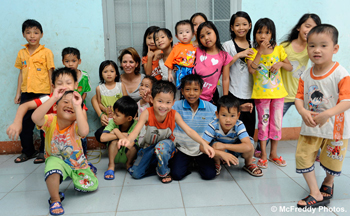 |
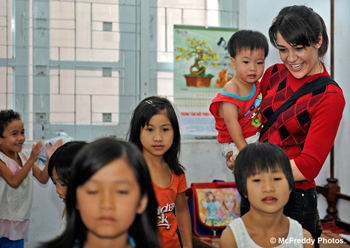 |
We spent the rest of the day in the Buon Don District which is 20km away from Buon Ma Thuot. It has a national park with many elephants. An elephant spends an average of 16 hours everyday in search of food and sleeps for about 3 to 5 hours. They sleep standing sometimes, whereas baby elephants often lie down to rest. Even if elephants are huge animals, they are good swimmers and enjoy swimming even in the sea.
They love bathing in mud which protects their skin from the sun and keeps it cool. Mud is also an insect repellent.
Elephants use their trunk to pick up food and bring it to their mouth. They are herbivorous animals. They can grab leaves and branches with their trunk. When food is lacking, they use their tusks to uproot trees.
Elephant are useful and friendly animals to humans. Over thousands of years, elephants have been domesticated to work in the forest, to plough the land and to perform and entertain people during festivals and ceremonies. They are intelligent animals that can learn and remember basic skills. In Southest Asia elephants are commonly trained to drag large pieces of wood that bulldozers and trailers can not lift. Tim intends the center to welcome some elephants so they can help in treating disabled people in the new rural Maison Chance project.
Ban Don is considered the best place for elephants’ hunters and trainers in Vietnam. Their talents were famous throughout South Asia. But nowadays in Vietnam, elephants are still seen as working forces as well as domestic animals by ethnic minorities. The region has recently decided to henceforth celebrate Elephant Day.
Ban Don is well-known as the elephants’ kingdom in the Dak Lak province. It is the home of the largest population of wild and domesticated elephants in Vietnam- there are about 80 – 110 wild elephants and 61 domesticated elephants. These figures are now decreasing and elephants could become a legend from the past very soon.
More than a relationship to a working and domesticated animal, there is in this region an complex weave of knowledge, beliefs and cultural activities related to elephants, building a strong ‘elephant culture’. However, intensive deforestation results in continuously reducing the elephants’ natural habitat, as well as settlements of migrants and noises generated by working activities in the forest cause harm to these animals.
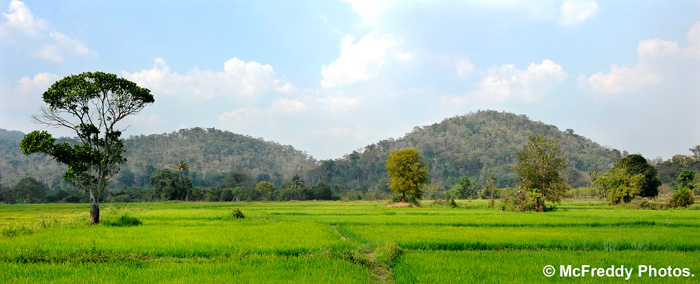
The following day, we went to the Buon Don district in search of the national park. The views from the roads were there charming, with green fields stretching to the infinite, lakes and mountains everywhere around usand white egrets taking off and offering the most beautiful pastoral scene. This park still has its wild and authentic aspects. We realized at the entrance that the park was closed because of some alteration work being done. We then were told that the elephants had been released into the forest 2 or 3 months ago to be then captured again and taken back to the park. We were disappointed but were advised to go to Cau Treo (the suspended bridge park).
As soon as we got there, we spotted our first elephants. They were here to entertain the tourists though and carry them by 2 or 3 through the park on their back. They had been domesticated to work. During the day, they work in the park and walk for about 7km every night to join their resting place in the forest. The residents say that they don’t rest much as they also have to carry some wood at night.
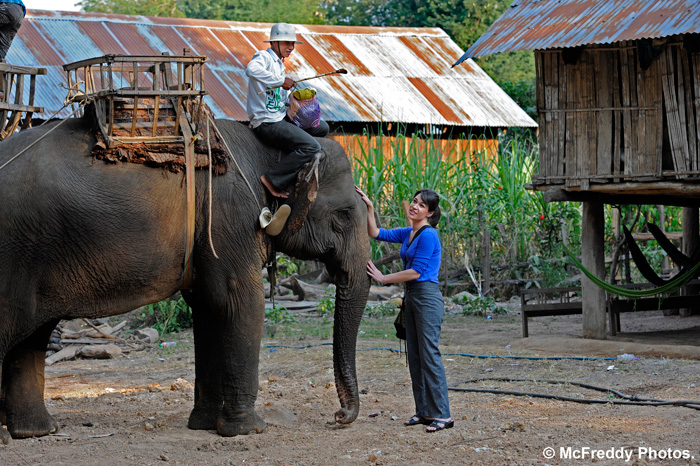
We then admired the scenery from the suspended bridge. Several affluents coming from the North meet in the Serepok River which has two main affluents running side by side and then merging. One of this affluent is muddy whereas the other is of clear beautiful water all year long.
After we crossed the bridge, we stopped in a restaurant to rest and have dinner as we were all exhausted. We enjoyed some special rice from the high-plateaux along with delicious fish from the Serepok River and local beer named after the legendary river. At dusk, we made our farewells to the river and the Ban Don region to go back to Buon Ma Thuot for the night.
We were to visit the Hope Center on the following day. It is administrated by the local Department of Education and Vocational Training and is well equipped. It provides professional training to disabled children. Unfortunately, we arrived at 12pm and therefore we unable to observe the children working and learning. However, we learned that the center provides accommodation and training to 200 children with auditive or visual impairment and children suffering from autism or handicap. 95 of them live on the premises for their families are in need. The youngest is 16.
They learn how to produce wooden jigsaws and flowers and are then assisted in order to find a job outside the center.
Being on a tight schedule for Tim and Clara had to fly back to Saigon at 6pm, we said goodbye to the Hope Center and made our way to the main social protection center of the Dak Lak province not far away.
The social protection center is 500m away from the main street in a large and green area. Founded in 1990, it is administrated by the local Work and Social Affairs Department. It employs 64 staffs and welcomes 135 orphans, 59 elderly persons, 19 persons suffering from serious disabilities and 112 psychiatric patients, as well as 8 homeless persons.
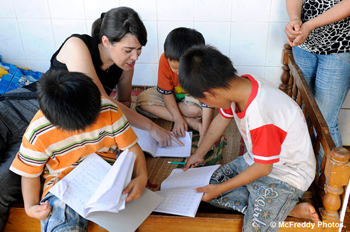 |
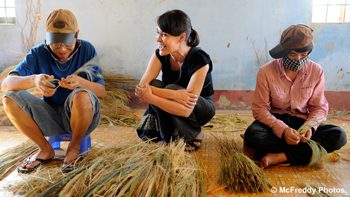 |
We were guided by the staff to visit the center and first met the elderly people and the orphans. We talked to Thang, who is alert and speaks very well. We noticed that he was intelligent and could learn easily, but his nurses said he had memory troubles.
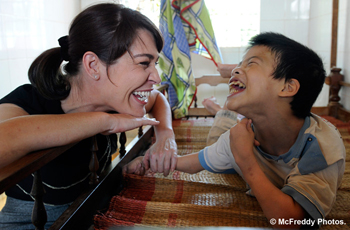 |
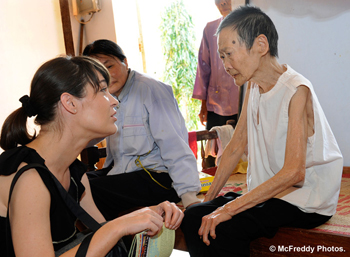 |
Talking longer with the staff, we found out that the center didn’t have any full-time physiotherapist and that the deaf and elderly beneficiaries didn’t have any hearing aids.
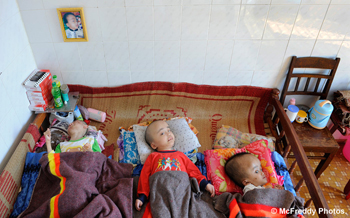 |
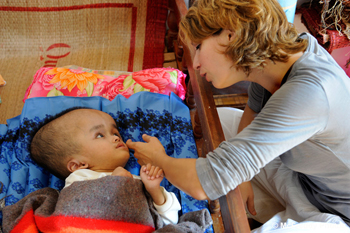 |
In the psychiatric section, patients suffering from minor pathologies have a chance to go out and learn with other beneficiaries. They can make little wooden brooms with great ability and patience. Other beneficiaries produce incense sticks and learn to breed swines and rabbits and can grow vegetables.
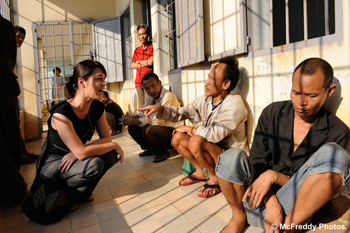 |
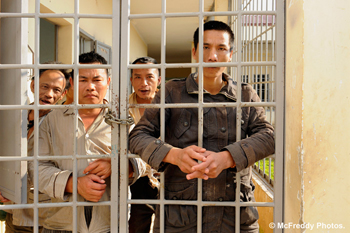 |
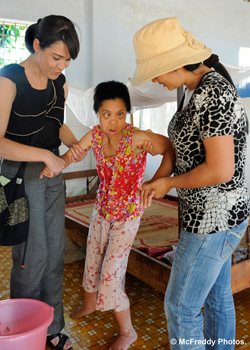 |
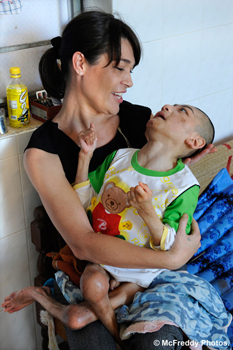 |
The orphans are very well looked after and assisted. There are two housing facilities for the girls and 2 for the boys. These amenities are quite new and tidy. All the children here are not orphans though. Some of them come from disadvantaged families or have lost one of their parents. They all attend school from grade 6 to grade 12 and when they have passed their baccalaureate, they can go to University. When they have completed their degrees they can come back to the center to help and teach what they know.

There are still some deficiencies, but beneficiaries are there looked after 24/24 and the staffs are devoted to their patients.
It was then time for Tim and Clara to go to the airport and we thanked and made our farewells to the staff for their time and eventually got on the bus.
Cuong and Freddy stopped on their way back to Phuoc Long at the Shelter for ethnic minorities’ children which is administratred by the nuns from the Long Dien parish.
After the long trip from Dak Lak to Binh Phuoc, we stopped at midnight in a hotel for the night. We were 40 km away from Phuoc Long.
The next day, after we had driven for 1.30, we arrived at the center.
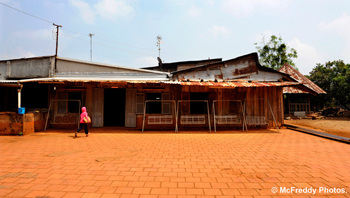 |
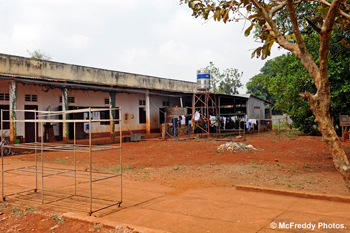 |
This center is located at 500m from the Long Dien church.We were warmly welcomed by the nuns. Sister Loan informed us that the center was at this moment accommodating 90 children from ethnic minorities. These children are fatherless and/or motherless or have been abandoned by their parents for economic reasons. They attend public school from grade 1 to grade 12. When they have passed the baccalaureate, they can go to University or the monastery according to their whishes. Children who attend high school have to ride their bike everyday for 14 km to reach the school.
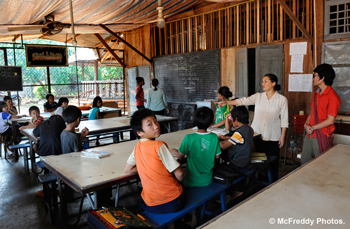 |
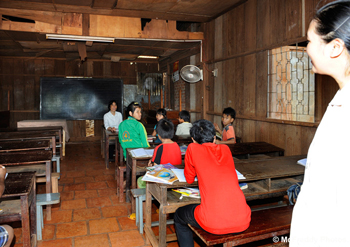 |
After school, the children have to help the nuns with the garden or the neighbours with the cashew nuts shelling.The material conditions here are not very good and residents are in need of various things. The tables in the dining room are damaged but they are still used as classroom tables. The steamer in the kitchen is broken but money is lacking to buy a new one. This is why the children sometimes have to eat rice which is not completely cooked. The roof is in bad condition and leaks when it’s raining, the floor is sinking.
Sister Loan told us she regretted not to be able to buy enough food for the children everyday and that she was hoping to see the center renovated one day. The nuns deplored that the children are so often sick in winter because of these poor conditions.
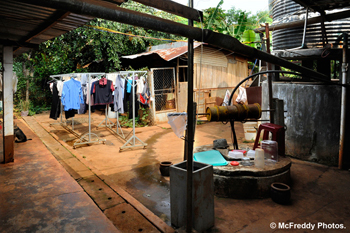 |
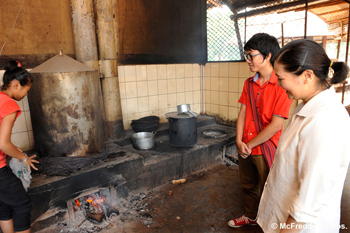 |
The nuns weekly visit the neighbourhood in order to help people around. They provide food and medication and spot some children who should join the center. Sister Loan explained to us that people from ethnic minorities tend to live in autarky, hiding the sick amongst them. It is therefore difficult to help them. We now had well figured out the situation and could leave the center.
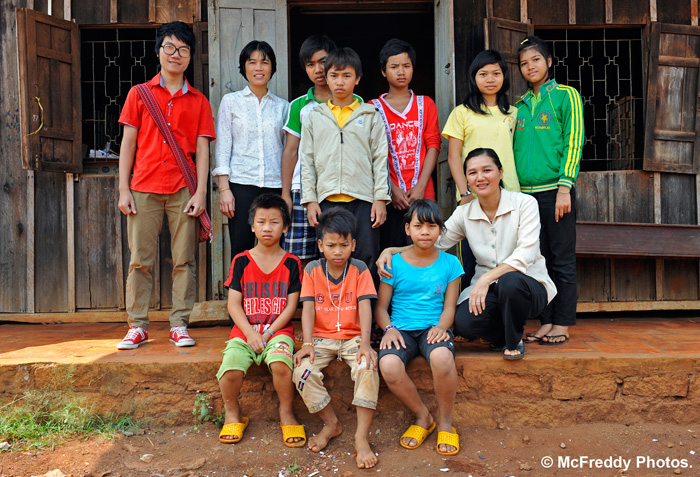
We went back to Saigon with our memories and a better understanding of the situation in the high plateaux region. We learned a lot and are now even more able to help and assist these people who still haven’t had a “chance”.
